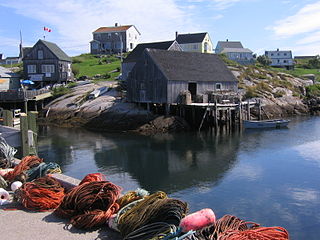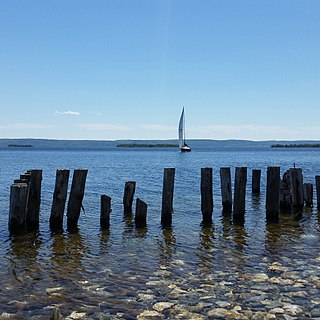John Janvrin (29 August 1762 – 22 December 1835) was a businessman, politician, militia officer, and justice of the peace in Canada. [1]

A justice of the peace (JP) is a judicial officer of a lower or puisne court, elected or appointed by means of a commission to keep the peace. In past centuries the term commissioner of the peace was often used with the same meaning. Depending on the jurisdiction, such justices dispense summary justice or merely deal with local administrative applications in common law jurisdictions. Justices of the peace are appointed or elected from the citizens of the jurisdiction in which they serve, and are usually not required to have any formal legal education in order to qualify for the office. Some jurisdictions have varying forms of training for JPs.

Canada is a country in the northern part of North America. Its ten provinces and three territories extend from the Atlantic to the Pacific and northward into the Arctic Ocean, covering 9.98 million square kilometres, making it the world's second-largest country by total area. Canada's southern border with the United States is the world's longest bi-national land border. Its capital is Ottawa, and its three largest metropolitan areas are Toronto, Montreal, and Vancouver. As a whole, Canada is sparsely populated, the majority of its land area being dominated by forest and tundra. Consequently, its population is highly urbanized, with over 80 percent of its inhabitants concentrated in large and medium-sized cities, many near the southern border. Canada's climate varies widely across its vast area, ranging from arctic weather in the north, to hot summers in the southern regions, with four distinct seasons.
Born in Jersey, Janvrin sailed to Isle Madame, Nova Scotia, in order there to manage Philip and Francis Janvrin and Company, his brothers' business. [1] He then established his own business, John Janvrin and Company, in fishing and retail on Cape Breton Island. [1] [2]

Jersey, officially the Bailiwick of Jersey, is a Crown dependency located near the coast of Normandy, France. It is the second closest of the Channel Islands to France, after Alderney.

Cape Breton Island is an island on the Atlantic coast of North America and part of the province of Nova Scotia, Canada.
Janvrin held a number of offices during his time in Cape Breton. He was a member of the Executive Council, a Lieutenant-Colonel in the militia, and a justice of the peace. [1]
Janvrin Island belonged to John Janvrin at one point and is now named after him. [1]
Janvrin Island is a Canadian island off the coast of Cape Breton Island Nova Scotia in Richmond County. Janvrin Island, named for the family of John Janvrin, a merchant trader of Jersey, Channel Islands, is connected by a bridge to neighbouring Isle Madame. Janvrin Island was used by the Mi'kmaq Indians as a summer hunting ground and was especially prized for the white skinned deer who prospered there. For this reason, they called it "The Isle of the White Stag."
While carrying on his various commercial activities after his 1815 return to Jersey, Janvrin became increasingly interested in banking and brokerage. This led to interests in London, and there is reference in correspondence to “John Janvrin & Co. of the city of London.” He was also a partner in the London brokers DeLisle, Janvrin, and DeLisle. As time went on, the Janvrin family began moving out of mercantile trade into banking and brokerage in London and on Jersey. Around the middle of the 19th century it concentrated its energies and capital in that sector of the economy. [1]












